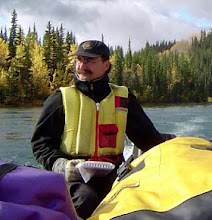 |
| The trace of the sap leading up to the Pukerangiora Pā. |
There are distinctly different contact histories between Indigneous and Newcomers in western Canada and New Zealand. The Riel Resistance of the 1880s is a brief counter point to the long drawn out blood lettings of the New Zealand wars. Dave Rogers took me to the site of one of the first encounters, where a group of Maori fighters dug in on an old Pā site to stop the advance of British troops and local militia. “A loss, one of many that followed,” says Dave. He then takes me to the Pukerangiora Pā, where a British force was soundly trounced by the Maori early in the war. A subsequent attack by a new commander, one not completely convinced of the colonial government's policies, ordered a laborious siege. His troops dug a two kilometre long sap, with eight sizeable earth and timber redoubts regularly spaced along it. This kept his troops busy for months and those on both sides relatively safe. Once the sap approached the walls of the Pa, a truce was agreed and the battle ended, this time a Maori defeat. We ended the visit with a brief discussion of a Maori community tourism venture to introduce this history to cruise ship tourists.
The New Plymouth museum exhibit of the Pakeha settlement of Taranaki opens with a cannon and survey instruments, the colonial takeover tools. Further in, we get the domestic and farm stories along with the rugby sweaters. There is no denying the violence that allowed this story to start and flourish. With outstanding claims against the Crown, the Taranaki Maori Iwi still harbor some hard feelings about this history. Dave, although a Maori in a community leadership position, is upbeat and positive about situations that look much more difficult than those I see in the Yukon. Always good to have the chance to look over the fence.
 |
| The centre of Parihaka |
I grew up in a community where I had lots of older aunties, many of the uncles murdered during the revolution. Most of the survivors, my grandparents among them, abandoned their land and left for Canada. My parents went back during Perestroika in early 1990s. Everything was taken over by others, there was no thought of regaining lost places. But that was only 70 years after the events. Perhaps after 130 years it is possible to regain a place, to be a part of the land again. My ancestors left and made new homes on the other side of the world. I've no appetite for reconnecting to that place, though my Grandmother surely would have, if it were possible. I know her home as a young woman almost as a fairy tale, a place once in history and now seemingly gone for ever. I am deeply impressed with the fortitude and determination of the Maori Iwi who have toughed out this hard time, who have kept their heart and land bound together and who are bringing the Pakeha to the table to make things right.
It was great honour to have Dave Rogers share his stories and places with me. While I still have my language and the culture of my faith, my brothers and I have lost all track of the intimacy of spiritual and physical connection to the place where our ancestors are buried. For reminding me that there are people who have not lost this and who are working hard to retain it, I am grateful to Dave.
 |
| The rural landscape of the Parihaka lands today. |







No comments:
Post a Comment